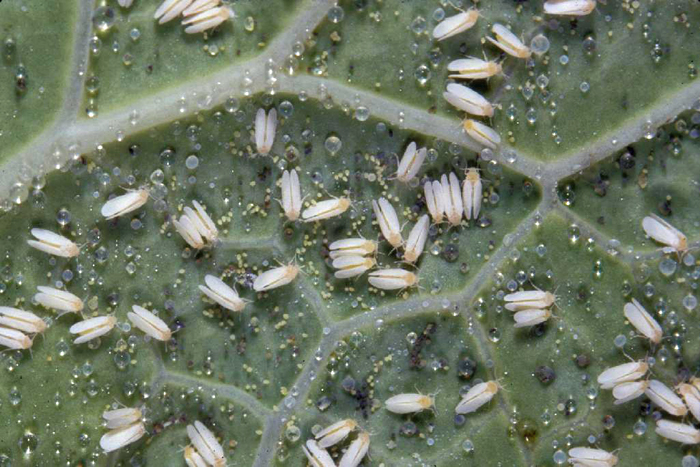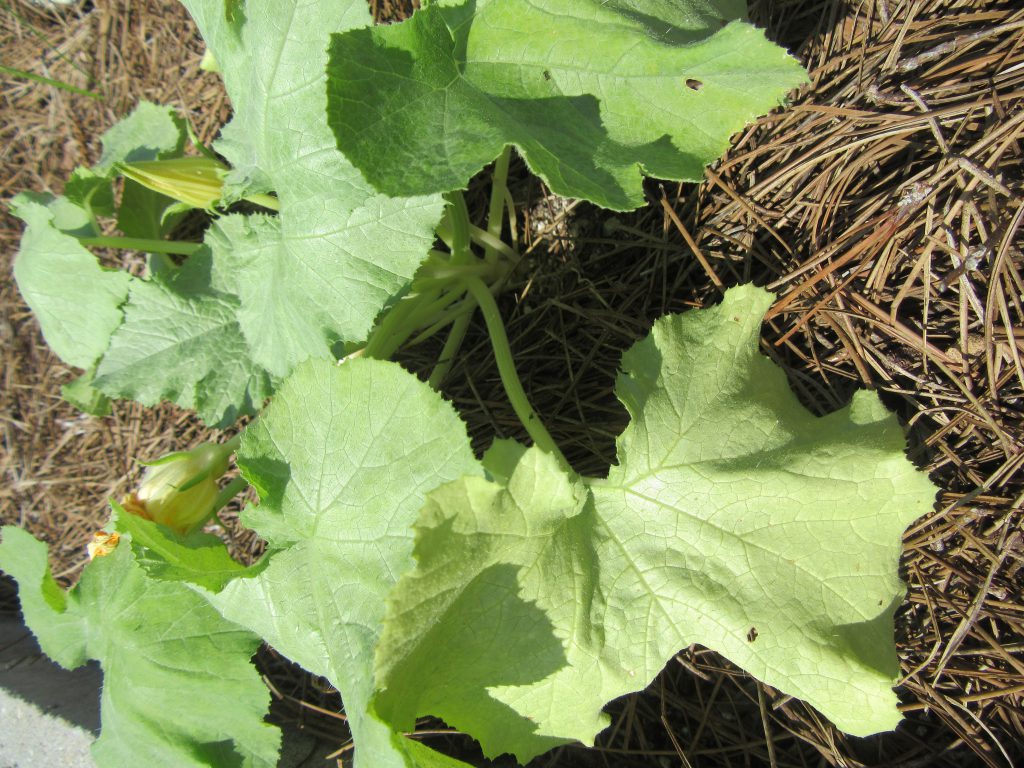Over the last month or so, home gardeners and commercial growers alike have noticed what look to be large dust particles floating through the air. It’s probably not uncommon to have inhaled a few or even a few hundred of these mysterious particles. Most likely, these “particles” aren’t dust at all but whiteflies instead. Whiteflies are small (less than a tenth of an inch long), white, soft-bodied insects. They aren’t flies but are considered ‘true bugs’ by entomologists. The most common whitefly species in Northwest Florida is the silverleaf whitefly, also known as the sweetpotato whitefly. Whitefly numbers have exploded exponentially this year because of last years’ mild winter. These irksome insects feed on a variety of annuals, shrubs, vegetables and trees.
Whiteflies typically feed on the underside of leaves. Initially, disturbed leaves will become pale in color, then a sticky substance may develop on the surface of the leaves. This sticky substance is called honeydew. Honeydew is actually a sugary substance excreted by the whiteflies as part of their elimination process, similar to what aphids and scale insects produce. After honeydew is deposited, sooty mold develops to feed on this readily available sugar source. Sooty mold is a fungus that forms a gray to black colored coating on plant leaves. It normally grows on leaves that were previously covered with honeydew. Sooty mold hinders the ability of leaves to absorb light and ultimately limits photosynthesis.
So what should be done to control whiteflies? It depends on what is being grown. If whiteflies are present, the role of beneficial insects should be taken into consideration. Plenty of predatory insects such as lady bugs and green lacewings are around to feed on whiteflies. In fact, leaving the whiteflies alone on your trees and shrubs will attract more predatory insects. Below are some whitefly control methods that produce minimal damage to beneficial insect populations.
Whitefly Control in Vegetables
- Sticky Traps – Yellow sticky traps are a good way to monitor whitefly populations and can help determine when insecticide application is appropriate.
- Insecticidal Soaps – Insecticidal soaps are usually applied as a 1 to 2 percent solution (2½ to 5 tablespoons per gallon of water). It is important to follow the application directions on the label. Insecticidal soap should be applied in the evening, when the sun is low in the sky and the temperature is below 85°F. Some insecticidal soaps available at local lawn and garden centers include: Bonide Insecticidal Soap, Bonide Insecticidal Soap, and Bayer Advanced Natria Insecticidal Soap.
- Horticultural Oils – Horticultural oils should be handled like insecticidal soaps. Like the soaps, they should be applied in the evening. Some horticultural oils available at local lawn and garden centers include: Bonide All Seasons Spray Oil, Southern Ag Parafine Oil, and Garden Safe Neem Oil.
- Other Insecticides – Harsher chemicals are not recommended for the home gardener, because whiteflies have become resistant to most products on the market. Use of broad spectrum insecticides may also contribute to an increase in whitefly populations because they kill beneficial predatory insects.
Hopefully winter will be cooler this year and the profuse whitefly population will be knocked back. Until then, we wish all home gardeners the best of luck with fall gardening!
- Gardening in the Panhandle LIVE! Program Summary: Pests of Florida Lawns and Landscape Plants - May 28, 2025
- Fun Facts About Ferns - April 30, 2025
- Gardening in the Panhandle LIVE! Program Summary: Freeze Friendly Foliage Plants - April 30, 2025


